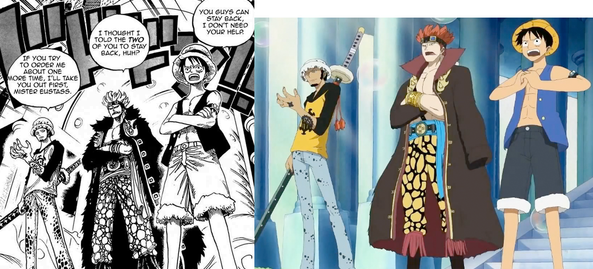Blitz News Digest
Stay updated with the latest trends and insights.
Anime and Manga: A Love Story in Frames
Dive into the enchanting world of Anime and Manga, where every frame tells a love story! Uncover hidden gems and timeless classics today!
The Evolution of Anime: From Hand-Drawn Frames to Digital Artistry
The evolution of anime has been a remarkable journey, tracing its roots back to the early 20th century when the art form was primarily characterized by hand-drawn frames. Early animators employed painstaking techniques to bring characters to life, utilizing traditional animation methods such as cels and stop motion. This labor-intensive process was not only time-consuming but also limited the possibilities of visual storytelling. However, the fascination with animation burgeoned, leading to the establishment of iconic studios like Toei Animation in the 1950s, which laid the groundwork for modern anime as we know it today.
With advancements in technology, the anime industry transitioned into the digital age, marking a significant shift in artistic capabilities and production efficiency. Digital tools and software such as Adobe Animate and Toon Boom Harmony have revolutionized the production process by allowing artists to create stunning visuals with enhanced precision and flexibility. Additionally, the rise of 3D animation techniques has opened new frontiers for storytelling, allowing creators to explore complex narratives and rich worlds. As a result, the fusion of traditional artistry with cutting-edge technology has not only expanded the creative horizons of anime but has also solidified its status as a prominent global phenomenon.

Manga vs. Anime: Understanding the Key Differences and Similarities
Manga and anime are two popular forms of entertainment that have captured the hearts of millions worldwide. While both share a common origin in Japanese culture, there are distinct differences between the two. Manga, which translates to 'whimsical pictures', is typically a printed comic or graphic novel that tells a story through sequential art. On the other hand, anime refers to animated television shows or films that are often based on manga. The primary difference lies in the medium: manga is static and reads from right to left, while anime is dynamic, featuring movement, sound, and voice acting, which adds another layer of immersion to the storytelling.
Despite their differences, manga and anime have many similarities that bind them together. Both forms are renowned for their unique art styles, character development, and intricate plots. Additionally, many anime series are adaptations of manga, leading to a rich interconnection between the two. Furthermore, fans often enjoy both formats, appreciating the anime adaptations for their animation and voice performances while valuing manga for its depth and artistry. This shared fanbase highlights how both formats can complement each other, providing a fuller experience of the stories they tell.
10 Essential Anime Series Every Fan Should Experience
If you're an anime enthusiast, exploring the vast world of animation can be both exciting and overwhelming. To help guide your journey, we’ve compiled a list of 10 essential anime series that every fan should experience. These series not only showcase stellar storytelling and character development but also represent diverse genres that cater to a wide array of tastes. From action-packed adventures to heartwarming tales, there’s something on this list for everyone.
Each of these anime series has made a significant impact on the genre and has garnered a dedicated fanbase. Take, for example, classics like My Hero Academia, which blends superhero elements with coming-of-age themes, or Attack on Titan, known for its intense narrative and groundbreaking animation. Whether you're revisiting old favorites or discovering new gems, these series are sure to leave a lasting impression. So grab your popcorn and get ready to dive into some of the best that anime has to offer!